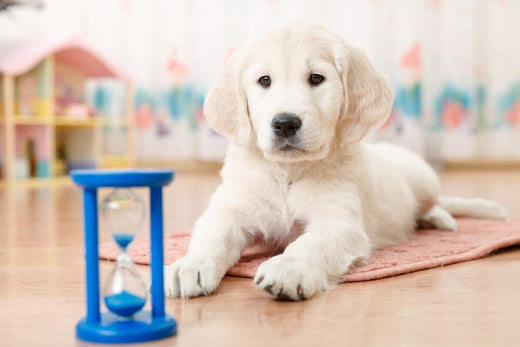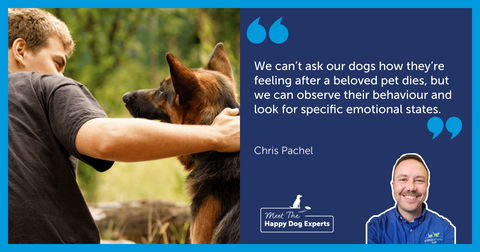
When Can I Start Leaving My Dog Home Alone?
Do you sometimes need to leave your pooch at home alone? It goes without saying that you can't be at home every minute of the day, especially if you work, but you should make sure that your dog isn't alone for long periods.
We have some top tips that will help make the experience less challengingfor both you and your dog, especially if they like to use their sad dog eyes on you! The length of time you can leave a pooch alone depends on the individual - you should consider how old your doggo is, their personality, behaviour and their experiences so far. If you're a pet parent then you probably know your pawsome pal well and will have an idea of how they respond to being alone.
When you can start leaving your dog home alone depends on the dog's training, age, and any existing health conditions they might have.
- Young puppies under 6 months oldcan generally be left alone for up to 2 hours but it's best to build up to this gradually; they'll need to be let out to go to the toilet after this length of time.
- If your dog is over 18 months oldthen they can be left alone for 4-6 hours, and if they are an older dog then this can vary between 2-6 hours depending on their health.
4 Tips To Help When You Start Leaving Your Pooch Alone
1. Start Small, Then Increase Alone Time Slowly
To prevent your doggo from experiencing a fear of being alone, you should get them used to small periods of time alone starting from when they're a pup. You don't need to leave the house entirely but you can leave them alone in a room - just for less than 10minutes initially - and then return when they are calm and quiet. You can slowly increase their alone time until they become more comfortable with their own company.
2. Only Reward Calm Behaviour!
It's understandable that your pawsome pal may cry sometimes when you leave - they like being around you! But, however tempting it might be, it's important not to reward negative or agitated pet behaviour with fuss and attention. By comforting your pet, you can reinforce their worries! Instead, teach your pet that being home alone isn't something to be afraid of; when you return, greet your dog - but calmly to avoid overreaction or negative associations. With time, your pet will soon learn that you're going to return, and there's nothing to be worried about!

3. Make Alone Time Positive
Leave your dog with dog-safe chews, food toys, and treats before you go. Using their normal puppy food within the food toy will help take up some of your pup's energy and time. Provide them with a safe, comfy space to snuggle into with plenty of blankets. You should also try and tire your pup out before you leave - play a game with them or take them for a walk so that they can settle down for a snooze when you are away.

4. Have Someone Visit Your Pooch
To avoid a situation where your doggo becomes stressed, make sure that you don't leave them alone for a long period initially; you can always ask a friend, neighbour, or even a professional dog walker to pay them a visit. Ideally, you should never leave a puppy or young dog alone for more than 2 hours until they have been with you for 6 months so if you need to be out for longer then make sure someone can let your pup out for a toilet break; otherwise, this could hinder their toilet training.
You can consider using an ADAPTIL Calm Home Diffuserto support your pooch when they're home alone; this is a simple, yet clinically proven solution, to help calm and relax adult dogs when they're home alone or facing other challenging situations. It will help support them by creating a reassuring environment until you return and can also help with training, faster learning, and better adaptation.








































